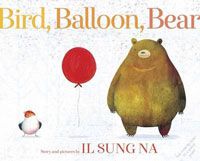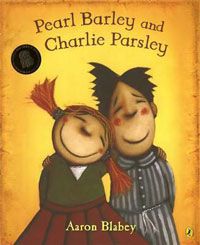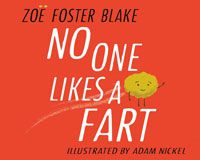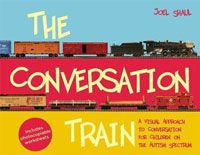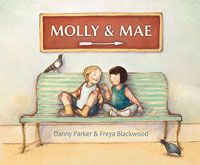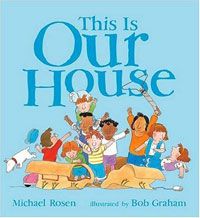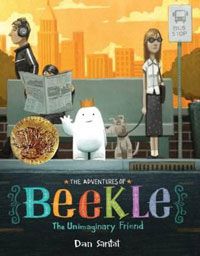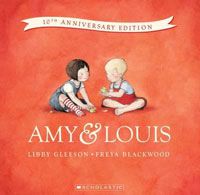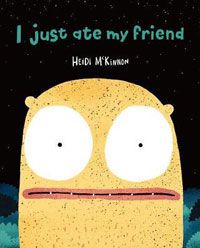Making friends and then being happy with your friends is hard work, and not just for kids! We’ve picked out some of our favourite picture books that explore friendship and all its attendant wonders, challenges, disruptions and pleasures.
Bird, Balloon, Bear by Il Sung Na
Bird would love to make a friend in his new forest home, but unfortunately he’s very shy. He’s mustering the bravery to approach Bear, when it becomes obvious that Bear has just filled his friend vacancy – with a giant red balloon. Bird is disheartened, but patiently keeps hanging around and being available. When the balloon meets an explosive end, the timing is finally right, and Bird and Bear form a wonderful friendship.
Il Sung Na’s simple and sweet story, and cute roly-poly illustrations, give the perfect dose of reassurance for bashful toddlers going into new situations. For ages 2 and up.
Pearl Barley & Charlie Parsley by Aaron Blabey
Best friends Pearl and Charlie couldn’t be more different if they tried! Pearl is a zippy daredevil, prone to attempting wild physical feats and chasing after mysteries, while Charlie is into calm, quiet and thoughtful pursuits. The two friends are utterly devoted to each other, and luckily they balance each other out perfectly. When Pearl needs soothing after her energetic pursuits, Charlie is there for her. And when a mopey Charlie could do with some cheer, Pearl has plenty of antics for him.
Bold, painterly illustrations and straightforward text make this a fun read that shows loyalty and appreciating differences can add up to strong alliances. For ages 3 and up.
No One Likes a Fart by Zoe Foster Blake
Sometimes it can feel like the right person isn’t out there. This is definitely the case for Fart (a woolly brown cloud that’s a lot cuter than you might think), who hangs around forlornly in public places, hoping to be seen and appreciated and make friends, but instead is smelt and NOT appreciated and constantly gets waved on. Fart’s search for a friend ends happily though, proving that there’s no need to change who you are, there will be someone out there who likes exactly what you’ve got.
Come for the toilet humour and the cute retro illustrations, and stay for the comforting relatability of Fart’s story. For ages 3 and up.
The Conversation Train by Joel Shaul
Making a connection using words and conversation is so important in the early stages of a friendship, but it’s not always the easiest or most intuitive skill to master. This innovative book – part picture book, part activity book – uses colourful pictures of train engines, carriages and tracks to demonstrate the ins and outs of a good conversation. Starting and finishing, staying on topic, switching topics and keeping things going are all covered.
This book has been written with children on the autism spectrum in mind, but the train metaphor is a fantastic tool for anyone who has trouble starting and keeping a chat rolling along smoothly. For ages 5 and up.
Molly and Mae by Danny Parker & Freya Blackwood
Molly and Mae meet on a train platform, then catch the train together through the countryside. At first they’re dizzily excited with frolics, exploration and their budding friendship. After a while though, they burn out, grow bored and then bicker. Both girls turn away from each other, but when Molly reaches out to Molly again, they rebuild their connection and good humour.
The gorgeous illustrations mirror the girls mood from excited to gloomy to harmonious. This story would be great for a little person having difficulties with a friend, and can start good discussions about apologies, reaching out and forgiveness. For ages 3 and up.
This Is Our House by Michael Rosen & Bob Graham
George is fairly pleased with his cardboard box ‘house’ and doesn’t want to let any of the other kids from his apartment complex in. A barrage of hopeful residents – all with excellent appeals and excuses – try to move in, but George always has a reason to bar them (too small, girls aren’t allowed, no one with glasses and so on). When George has to leave to use the toilet, he gets a taste of his own medicine on his return, and reconsiders his earlier stance.
The importance of sharing and inclusion are explored lightly in this fun story, and Bob Graham’s sympathetic illustrations bring to life the dramas of childhood play. For ages 3 and up.
The Adventures of Beekle: The Unimaginary Friend by Dan Santat
Adorable crown-wearing Beekle lives on an island with all the other imaginary friends, each waiting to be summoned forth by a child who will imagine him. After a fruitless wait, despondent Beekle takes matters into his own hands and sets out on a perilous sea journey. The urban human world at first proves bleak, uninspiring and scary, but brave and resilient Beekle eventually meets his child, shy and artistic Alice.
This is a quirky tale that will resonate with sensitive, imaginative, and lateral-thinking kids, and of course, those with imaginary friends. It gently acknowledges the difficulties of loneliness and not belonging, and delivers a hopeful and happy ending. For ages 4 and up.
Amy and Louis by Libby Gleeson & Freya Blackwood
Amy and Louis live next door to each other, close enough to call Coo-eee! whenever they want to make contact. They’re best friends who share a rich imaginative play life, but they’re separated when Amy’s family moves to a different country. Disconsolate Louis wants to call out to Amy as usual, but it’s only his grandmother who thinks it will work. Louis calls their old refrain, and forms a magical connection with Amy far away.
Enduring the loss of a friend and moving location can be sad times, and this story offers a soothing and nostalgic balm. For ages 3 and up.
I Just Ate My Friend by Heidi McKinnon
The first rule of friendship should probably be: Don’t eat your friend. Unfortunately no one informed the regretful monster in this story. After displaying the poor impulse control that gives this book its title, the monster has to search for a new friend, which proves quite difficult. Finally the monster finds someone, but the new friendship perhaps turn out differently than anticipated.
This bright graphic story can be read in a silly or serious mood, and has the capacity to raise all sorts of useful considerations. Treat others how you’d like to be treated, appreciate your friends while you have them, true friends are rare and valuable, don’t allow yourself to get too hungry around people you like… For ages 3 and up.


